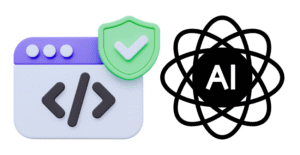Agile practices have become the darling of development management, heralded as the panacea for all project management ills. However, this perception often leads to a common pitfall: expecting immediate results without recognizing that Agile is a long-term commitment. It’s like planting a seed and expecting a fully-grown tree the next morning. But here’s the truth: effective Agile adoption is a journey, not a quick fix.
The Allure and Misconception of Agile
Agile is often marketed as a magical solution that will instantly streamline workflows, boost productivity, and improve team morale. While Agile can indeed deliver these benefits, it doesn’t happen overnight. The allure of Agile lies in its promises of flexibility, rapid delivery, and continuous improvement. Yet, when teams dive into Agile with unrealistic expectations, they often find themselves disillusioned and frustrated.
Imagine a novice gardener planting a seed and expecting a flourishing garden within days. They water it once, perhaps twice, and when nothing springs forth immediately, they abandon the effort. Agile adoption follows a similar trajectory if not approached with the right mindset.
The Reality of Agile Adoption

The reality is that Agile requires time, patience, and commitment. The transformation is akin to nurturing a delicate plant. You need to understand the soil, water it regularly, provide sunlight, and protect it from pests. Only then will it grow strong and bear fruit. Agile practices, too, require a nurturing environment, continuous learning, and adaptability to flourish.
When organizations adopt Agile, they must be prepared for a journey that involves:
- Cultural Shift: Agile is not just a set of practices; it’s a mindset. Transitioning to Agile often requires a significant cultural shift within the organization. This shift involves moving away from rigid hierarchies and embracing collaboration, transparency, and accountability.
- Training and Education: Teams need to be adequately trained in Agile methodologies. This includes understanding the principles behind Agile, learning various frameworks like Scrum or Kanban, and mastering the tools that support Agile practices.
- Iterative Process: Agile is iterative by nature. Success comes from repeated cycles of planning, executing, reviewing, and improving. Each iteration builds on the previous one, gradually improving processes and outcomes.
- Leadership Support: For Agile to take root, it needs the backing of leadership. Leaders must champion the Agile cause, provide the necessary resources, and remove any impediments that teams might face.
Example: Company A’s Agile Transformation
Consider the case of Company A, a mid-sized software development firm that decided to switch to Agile to tackle its chronic project delays and high defect rates. Initially, the transition was met with resistance. Team members were accustomed to the traditional Waterfall approach and were skeptical about Agile’s effectiveness.
Initial Challenges
In the first few months, Company A faced several challenges:
- Resistance to Change: Many team members were hesitant to embrace new practices.
- Misalignment: There was a lack of understanding and alignment on Agile principles.
- Process Chaos: The first few sprints were chaotic, with missed deadlines and unclear roles.
Turning Point
The turning point came when the leadership decided to invest in comprehensive Agile training for the entire team. They brought in experienced Agile coaches who worked closely with the teams, addressing their concerns and guiding them through the initial hurdles.
The company also adopted an open-door policy where any team member could voice their challenges and suggest improvements. This transparency and willingness to adapt made a significant difference.
Sustainable Practices for Agile Success

Through persistence and continuous learning, Company A began to see the benefits of Agile. Here are the key practices that led to their successful transformation:
- Regular Training and Workshops: Continuous learning is crucial. Regular training sessions and workshops help teams stay updated with the latest Agile practices and tools.
- Retrospectives: After each sprint, conducting retrospectives allowed the teams to reflect on what went well and what could be improved. This practice fostered a culture of continuous improvement.
- Empowered Teams: Empowering teams to make decisions and take ownership of their work increased accountability and motivation.
- Adaptability: Being open to change and willing to adapt processes as needed helped Company A refine their Agile practices over time.
Playbook for Effective Agile Adoption

Adopting Agile effectively requires a well-thought-out approach that acknowledges both the potential challenges and the transformative benefits.
1. Cultivate the Right Mindset
Embrace Change: Agile adoption is a progressive journey, not a sudden leap. The organization must understand that change is an intrinsic part of this journey. This involves preparing for a gradual transformation where each step builds upon the previous one, integrating new practices, and continuously refining them.
Foster Collaboration: Agile thrives on collaboration and transparency. It’s essential to create an environment where open communication is encouraged, and teamwork is the norm. This cultural shift often involves breaking down silos and promoting cross-functional collaboration, ensuring all team members, from developers to stakeholders, work in harmony towards common goals.
Steps to Cultivate the Right Mindset:
- Workshops on Agile Values: Conduct workshops to introduce and reinforce Agile values and principles.
- Storytelling: Share success stories of Agile transformations to inspire and motivate teams.
- Leadership Buy-In: Ensure that leadership is fully committed to Agile principles and leads by example.
2. Provide Comprehensive Training
Invest in Training: A successful Agile transformation begins with thorough training. It’s crucial to provide extensive education on Agile principles, frameworks (such as Scrum, Kanban, or SAFe), and tools. Training should be continuous to keep everyone updated on best practices and new methodologies.
Hire Agile Coaches: Bringing in experienced Agile coaches can significantly ease the transition. Coaches can provide hands-on guidance, address specific challenges, and ensure that teams are correctly implementing Agile practices from the start. They can also help in tailoring Agile practices to fit the unique needs of the organization.
Steps to Provide Comprehensive Training:
- Initial Training Programs: Implement intensive boot camps for new Agile practitioners.
- Continuous Learning Opportunities: Offer ongoing workshops, webinars, and certification programs.
- On-the-Job Coaching: Facilitate regular sessions with Agile coaches to address real-time issues and provide feedback.
3. Start Small and Scale Gradually
Pilot Projects: Begin Agile implementation with small pilot projects. These projects serve as a sandbox for testing and refining Agile practices without risking large-scale disruption. Choose projects with clear goals and measurable outcomes to assess the effectiveness of Agile.
Iterative Scaling: Based on the lessons learned from pilot projects, gradually scale Agile practices across the organization. This iterative approach allows for adjustments and improvements, ensuring a smoother transition. Scaling should be done in manageable phases, with each phase informed by the successes and challenges of the previous ones.
Steps to Start Small and Scale Gradually:
- Select Appropriate Pilot Projects: Identify projects that are small, well-defined, and have a lower risk profile.
- Document Learnings: Keep detailed records of the processes, challenges, and outcomes from pilot projects.
- Phased Rollout Plan: Develop a plan for scaling Agile practices, with clear milestones and review points.
4. Empower Teams
Decentralize Decision-Making: Empowering teams to make decisions fosters a sense of ownership and accountability. When teams are given the autonomy to manage their workflows and solve problems, they become more motivated and productive.
Supportive Leadership: Leadership must play a supportive role, providing the necessary resources and removing any impediments that teams might face. This support includes offering guidance, facilitating access to tools, and ensuring that team members have the time and space to focus on their tasks.
Steps to Empower Teams:
- Create Self-Organizing Teams: Form teams that are capable of managing their tasks independently.
- Resource Allocation: Ensure teams have access to the resources they need, from tools to training.
- Impediment Removal: Leaders should actively work to identify and eliminate obstacles that hinder team progress.
5. Focus on Continuous Improvement
Regular Retrospectives: Conduct retrospectives at the end of each sprint to reflect on what went well and what didn’t. This practice is fundamental to Agile’s philosophy of continuous improvement. It provides a structured way to analyze performance, gather feedback, and make necessary adjustments.
Adapt and Evolve: Be willing to adapt and evolve Agile practices based on feedback and changing needs. Agile is not a one-size-fits-all solution; it must be tailored to fit the unique context of the organization. Flexibility and openness to change are crucial for long-term success.
Steps to Focus on Continuous Improvement:
- Scheduled Retrospectives: Regularly scheduled retrospectives ensure continuous feedback loops.
- Actionable Insights: Translate feedback into actionable plans for improvement.
- Iterative Adaptation: Make iterative adjustments to Agile practices based on retrospective insights.
6. Measure and Celebrate Success

Track Progress: Use metrics to track the progress of Agile adoption. Metrics such as velocity, sprint completion rates, and defect rates provide insights into the effectiveness of Agile practices. Regular tracking helps identify trends and areas that need attention.
Recognize Efforts: Acknowledge the efforts of the teams and celebrate their successes. Recognition boosts morale and keeps teams motivated. Celebrating milestones, no matter how small, reinforces the value of Agile and encourages continued commitment.
Steps to Measure and Celebrate Success:
- Define Success Metrics: Establish clear metrics for tracking progress.
- Regular Reporting: Implement a reporting system to monitor and communicate progress.
- Celebrate Milestones: Hold celebrations for achieving milestones and recognizing individual and team contributions.
Effective Agile adoption is a journey marked by continuous learning, adaptation, and improvement. By cultivating the right mindset, providing comprehensive training, starting small, empowering teams, focusing on continuous improvement, and celebrating successes, organizations can successfully navigate the Agile transformation journey. Remember, Agile is not about quick fixes but about building a sustainable, collaborative, and adaptive culture that drives long-term success.
Final Thoughts
Adopting Agile is not a quick fix but a transformative journey. It requires a shift in mindset, a commitment to continuous learning, and a willingness to adapt. By understanding that Agile is an iterative process and focusing on sustainable practices, organizations can achieve lasting success.
Agile practices, when implemented effectively, can lead to significant improvements in productivity, quality, and team morale. However, it’s essential to approach Agile with the right expectations and be prepared for a journey of growth and learning.
Source Links
https://plan.io/blog/what-is-agile-project-management/
https://www.altexsoft.com/whitepapers/agile-project-management-best-practices-and-methodologies/
https://kanbanize.com/agile/project-management/agile-implementation













